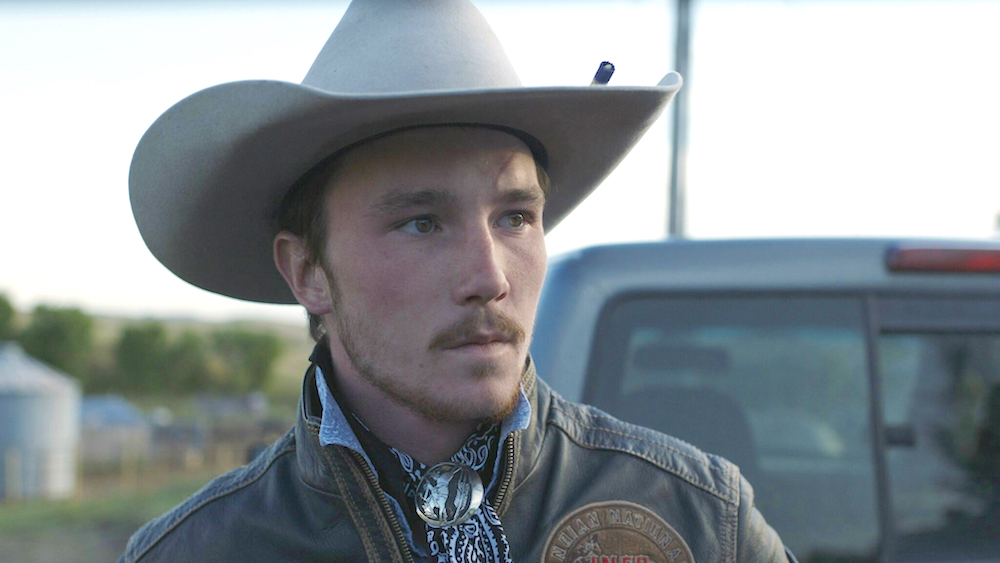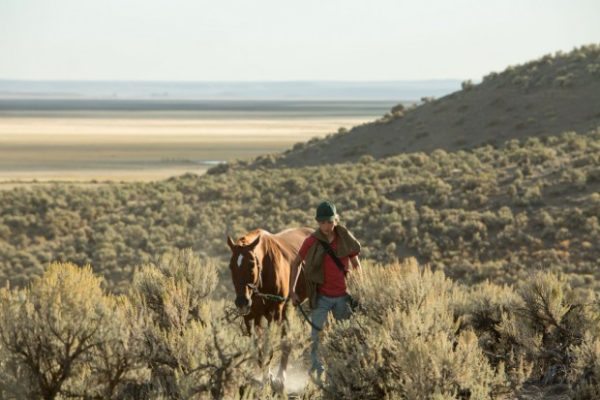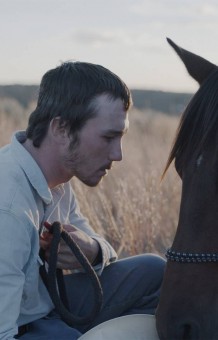
05 Sep Telluride Film Festival: Of Horses And Young Men
On Sunday of the 44th annual Telluride Film Festival I separated from Susan and our group. We had been moving in lockstep most of the weekend, but I had to see “Lean On Pete.” When I rejoined my companions and answered questions about the film, one of our friends remarked: “In the past several years, the movies that really excited you were the ones that have a special connection with your life.”

Charley (Charlie Plummer) and Pete
As evidence, he cited “All Is Lost” from 2013, in which Robert Redford’s character experiences a disaster at sea that had eerie echoes of a big storm I encountered while sailing alone in the Atlantic in 1967.
His second example was “Sully” from last year’s Festival. Not because I had landed an airliner in the Hudson, but because I could easily follow Captain Sullenberger’s thought processes as he fought down fear and eliminated all but the right choice as he deftly put the Airbus down in the river.
And because there is a slight resemblance: I am a retired airline pilot with a mustache.
Like this year’s “The Rider’s” Brady Blackburn and Charley Thompson in “Lean On Pete,” I am a child of the West, son of a man of the West.
Sometime in my dad’s younger years, he rode saddle bronc in local rodeos. By the time I came along he was operating 1500 acres of dryland Eastern Washington wheat ground and sharing with a brother mountain pasture where we summered a small herd of beef cattle. He lived and worked on that place for over 70 years, and was only content there.
I don’t remember when I first rode a horse by myself, but by age 6 I was assigned to old Daisy, who, on a good day could be encouraged go maybe 100 yards at a slow, bone-crushing lope. With money from the sale of my first 4-H steer, I bought a big pinto mare from another of my uncles. Ginger wasn’t a race horse, but on her I could just about keep up with my older cousins on our rides around the ranch. I never got involved in rodeo as a kid, but both my younger brothers followed my dad’s footsteps and rode the local shows around Eastern Washington and Southern British Columbia. I did get a taste of rodeo with one (short) bull ride in Townsend, MT in my mid-40s. Didn’t win any prize money, but I did get a good song out of the experience. Oh, and the taste of rodeo? It tasted mostly like dirt!
All of which is a long way of saying Chloé Zhao’s “The Rider” had me from the opening scenes.
Brady Blackburn’s (the rider in “The Rider”) story was inspired by the actual life of Brady Jandreau, a young rodeo cowboy from the Pine Ridge Reservation in southwest South Dakota. I found it amazing that a young woman, born in Beijing, could bring this story to film with such honesty. Her actors are all, or were, amateurs. Ms. Zhao has not tried edit them, so the dialogue sounds right: the short, often unfinished, sentences common through the rural West, laconic, except when telling each other stories around the campfire – those stories are round and full of detail. I know those people, those stories. I grew up with them. They are real.

Brady Jandreau in “The Rider”
The family members relate to each other in ways that also feel completely real: Brady has some difficult issues with his father, mainly having to do with a father’s fear for the safety of his son, especially after the serious rodeo accident that could have cost Brady’s life. The recovery, and the scar over the plate in his scull were filmed in real time, not over-dramatized, but not glossed over. We are witness to Brady’s musings over getting back into rodeo, or even being able to even get back on a horse.
Again, real.
Chloé Zhao is equally non-sentimental in portraying Brady’s younger autistic sister. She obviously loves her big brother, and he is her protector. The viewer is not told about this relationship; it is manifest in the viewing.
After Brady’s accident he is asked to work with a wild, unbroken horse. It was shot in two long takes, unrehearsed. He advances, retreats, speaks quietly, slowly calming the skittish animal, until he can tentatively, then more boldly, touch the horse, eventually leaning on, then softly lying across the horse’s back, and finally throwing his right leg across the horse and sitting quietly with no halter, bridle, or rope and the previously unridden horse just stands. Knowing this was unrehearsed makes the whole scene even more powerful. The young man is truly in sync with this wild animal.
The cinematography by Joshua James Richards renders the stark beauty of South Dakota beautiful in its various lights. One scene shows Brady galloping along the ridgeline in the late afternoon light, a thunderstorm on the horizon… In spite of the danger, considering the recency of his accident, this is redemption.
This redemption is the connection I find between “The Rider” and “Lean On Pete.”
In Andrew Haigh’s “Lean On Pete,” Charley Thompson (Charlie Plummer) is a 15-year-old high school kid, recently moved from Spokane to the outskirts of Portland, Oregon by his dissolute dad, Ray (Travis Fimmel). We don’t know much about Charley’s mother, but her live-in successor left Ray because of an extra-curricular romantic dalliance, and the events that send Charley out on the road begin with another of Ray’s ill-conceived affairs.
Charley begins hanging around Portland Meadows, a minor-league race track, excited by watching the horses run. He soon gets a job helping Dell (Steve Buscemi) with his race horses. Despite the hard-edged advice from a woman jockey, Bonnie (Chloë Sevigny), Charley falls in love with Pete, a quarter horse on his way down, consequently headed for a Mexican slaughter-house.
When Dell denies Charley’s offer to buy Pete after a last place finish in a sprint, Charley and Pete hit the road, ostensibly to find Margie, his father’s ex-girlfriend, Charley’s only surrogate mother.
To my mind, Pete is the author of Charley’s redemption.
The film resolves into several vignettes, the scenes with Ray, and with Dell and Bonnie being the longest and most important. Charley’s character is the only through-line. Each of these people has a dominant role while present; these are not cameo performances, but when they are over they are over. There is violence, but it occurs out of calm, unexpectedly, then it, too, is gone.
The dry, endless terrain of southeastern Oregon as envisioned by cinematographer, Magnus Nordenhof Jønck, is a character in this film. In one scene, Charley is leading Pete up to the top of an overlook. Stretching on forever below is a sagebrush flat with a single dirt road running diagonally to the horizon, one pickup trailing a cloud of dust.
Makes me thirsty just remembering the shot.
In the Q & A session that followed the screening of “Lean On Pete,” the author of the book, Willy Vlautin, was asked how he came to write the story. With a self-deprecating half-smile he answered that Charley was him: cards stacked against him, bad luck or no luck. But Charley was ultimately a winner, because in spite of all he just kept going. And Willy? He lay in bed and wrote his life – but this time with a good ending.


Sorry, the comment form is closed at this time.